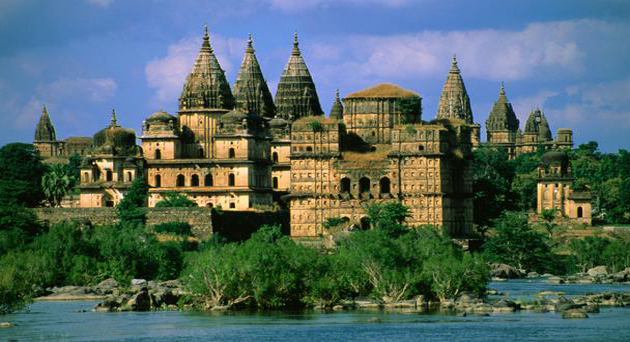 Tourism
Tourism was a highly-developed economic and cultural activity in South India during the medieval period with even people from Kashmir in the far north ventured deep into the region to support temples and cultural activities, an expert in the field says.
"From the epigraphs available of the period, it is clear that there was a lot of north-south movement. Generally, people from North India are termed as Aryan in the inscriptions. You can see people from Kashmir and Bengal in many pilgrim centres of South India," historian and epigraph-specialist S. Chandni Bi of the Aligarh Muslim University's history department told.
"There are many inscriptions in Tamil denoting the presence of Kashmiri people. They are seen as donors, making endowments to the Sri Rangam, Tiruvottiyur, Kancheepuram and Chidambaram temples, to mention only a few. There are at least eight Tamil epigraphs that mention Kashmiri donors between the 11th and 13th centuries," she added.
Defining tourism as the "movement of people from one place to another, a considerable distance away, for a stay longer than a day, with or without a purpose," Chandni Bi said "Hiuen-Tsang's accounts tell us that he came from China, travelled to many places in India, and finally got into the ship from Sri Lanka to return home."
Not only the Ramayana and the Mahabharata, but the Silapathikaram, one of the five great epics according to later Tamil literary tradition, and the Thevaram, a 63-volume collection of Tamil devotional songs, also give us a vivid picture of common people and saints continuously moving to different parts of the country for a variety of reasons.
In modern times, entertainment is the main focus of tourism, but in ancient India, the purpose was religious, cultural or simply business, the historian clarified.
For instance, in the Sri Rangam Vaishnava temple, engraved on the eastern wall is a Kashmiri referred to as Arya Vasudeva Bhattan alias Rajaraja Brahmarayan from Anishtanam of Kashmirdesam. Rajaraja stands for king and brahmarayan denotes he was a Brahman occupying a very high and distinguished administrative office in the regime of Kulottunga I. These inferences make clear that the people from north India were settled in the Tamil land and played significant roles in politics and religion, Chandni Bi added.
People from not only different parts of south India but also from many parts of the north extensively toured the south for political, economic and philanthropic reasons. Thus, the Sri Rangam inscriptions are written in Tamil, Sanskrit, Oriya, Telugu, Marathi and Kannada, pointing to visitors from these lands.
Rulers from outside India also showed great interest in constructing religious buildings and mutts for pilgrims from their countries.
"We have the two Laiden Plates (artifacts) of Rajaraja I and Kulothunga I of the 11th century. Both relate to donations to a Buddhist vihar at Nagapattanam," Chandni Bi said, adding that this was clear proof that tourism was a major activity in medieval south India among all classes - irrespective of class, creed, caste, language, religion and even country.
"To sustain tourism, facilities for stay and food had to be created. Most travelled by road and so the kings took special care to provide shady trees along the roads. Inscriptions in different parts refer to many big and small roads which connected places.
"Royal roads and temple roads had the special prefix of Tiru and were called Tiruvidi. Interestingly, one such peruvidi (big street) of the 11th century at Tiruvalankadu is a part of the Golden Quadrilateral Project initiated by former prime minister Atal Bihari Vajpayee," the historian noted.
Horses, bullock carts and donkeys were largely used by all sections of the people as modes of commuting. A larger section of the population trusted their own legs. The inland waterways were also utilised and specially-built boats plied.
The temple premises and mutts were used as resting places. Chaultries, called "chattirams" were common at all junctions of main roads connecting different townships. Chattirams were managed by watchmen and care for the traveller, his luggage and the animal, if there was one, was available for a price, as was food and fodder. The term Ira Chattiram (night chaultry) perhaps indicates they were meant for night stays, the historian stated.
After transport and stay, the next priority was food. It appears that eateries were available on roadsides, which provided livelihood to destitute women. An elaborate free food distribution system ensured that tourists would not need to pay at the popular pilgrim centres, Chandni Bi said.
At many centres, there was provision perhaps for exchange of currency of different kingdoms and rulers that facilitated the tourists.
"We also have evidence of a hospital functioning in the Sri Rangam temple," the historian said.
"Moreover, almost all the houses had single or double raised platforms at the entry point that helped travellers to avail of rest and night stay. Generally, the common public were also kind and large-hearted to take care and spare food and water for travellers from far and near," Chandni Bi added.
 Tourism was a highly-developed economic and cultural activity in South India during the medieval period with even people from Kashmir in the far north ventured deep into the region to support temples and cultural activities, an expert in the field says.
Tourism was a highly-developed economic and cultural activity in South India during the medieval period with even people from Kashmir in the far north ventured deep into the region to support temples and cultural activities, an expert in the field says.